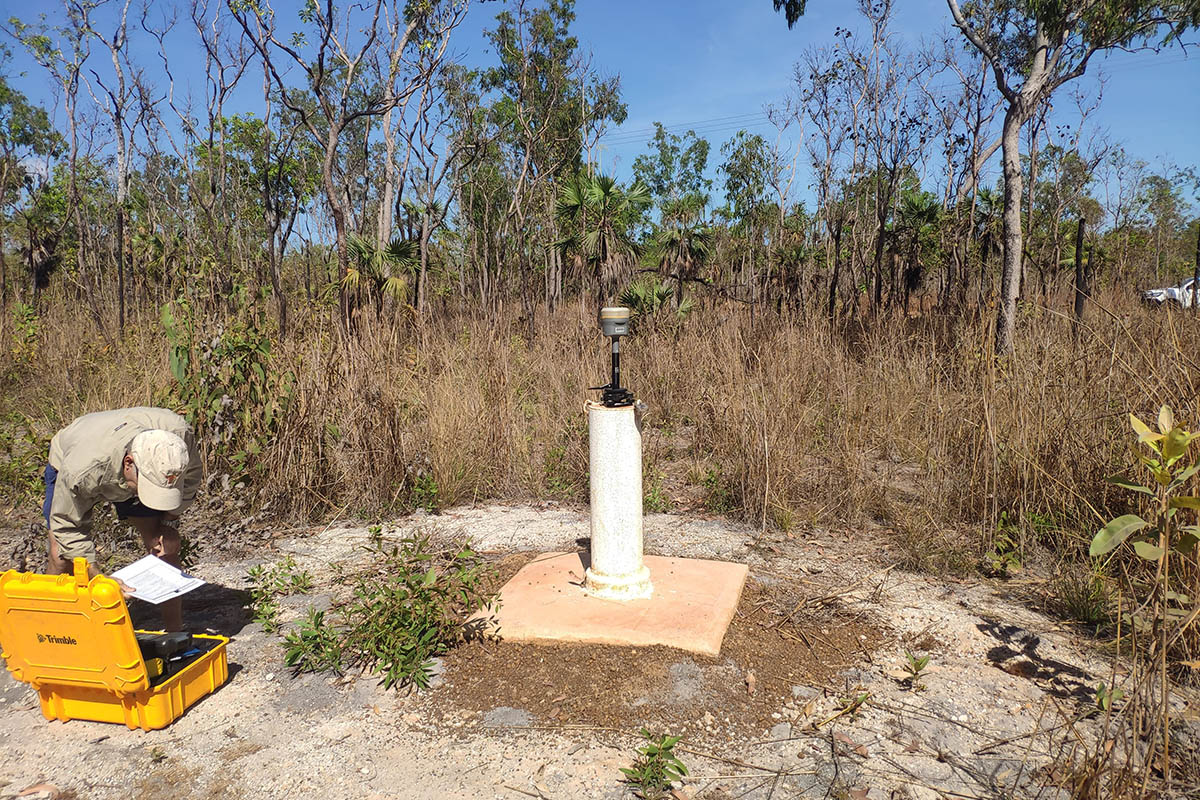Darwin Rural Groundwater Levels
As we approach the dry season in the Top End, it is good to know that our groundwater levels have peaked.
Groundwater is water that lies underneath the ground and is the most available source of freshwater on earth. Some 2.5% of the world’s total water pool is freshwater and of this approximately 30% is attributed to groundwater (USGS online, 2024).
Groundwater initially starts as rain which falls to the ground surface, moves through the soil profile and into underground water storage called aquifers, which then eventually flow into rivers, lakes or the ocean.
In the Territory, 90% of the water supply comes from groundwater.
Groundwater levels are measured in monitoring bores and are an important part of managing an aquifer. These levels typically rise in the wet season (1 October to 30 April) and fall in the dry season (1 May to 30 September). If we string these measurements together, we can construct a time-series of data and see these levels rise and fall over time.
There are a number of groundwater systems (a groundwater system may include a number of aquifers) within the Darwin Rural area but the most significant aquifers are in the Howard system and the Berry Springs system. Water Resources measures groundwater levels in the systems manually each month.
Groundwater levels in bores across these Darwin Rural systems have risen significantly (some bores over 10 metres), since the wet season commenced. After lower than average rainfall in November and December 2023, the Darwin Rural area saw heavy rains and flood conditions in January - March 2024 associated with two tropical lows and one tropical cyclone event. Groundwater levels have now reached their peak, setting up the dry season for above average aquifer discharge to dependent streams for the remainder of 2024. This peak is higher than the last two wet season peaks with depth to water (distance from the ground surface to the groundwater level) sitting within 6 metres of the surface for the Howard system and slightly deeper, approximately 10 metres, for the Berry Springs system.
While the groundwater peak is important, what is interesting is that the minimum groundwater level, which is typically the end of the dry (October-November depending on rains) has been increasing in recent years.
These are good signs for our Darwin Rural groundwater systems with the dry season on our doorstep and limited to no rainfall likely for the next 5-6 months.
Darwin rural groundwater systems are fill and spill systems and their storage capacity is low which means as groundwater discharges to the environment and water is extracted from pumps, the groundwater levels will continue to fall until the next rains. Some would say a 5-6 month drought. Therefore, it is important to be mindful of our water use so our bores don’t run dry.
While general trends are consistent for the same groundwater system, individual bores can vary. For more information on this please visit the Darwin Rural Groundwater Watch interactive map for a more interactive view of 15 bores across the area. Or the Water Data Portal for all monitored bores (current and historical) across the Territory.

